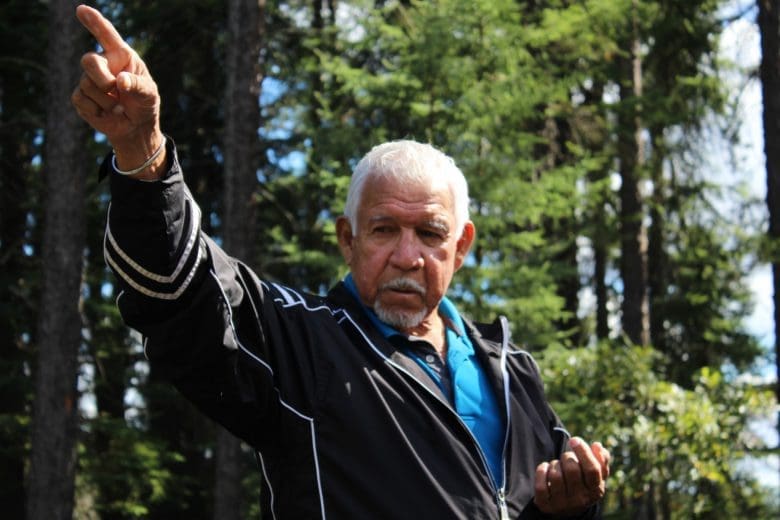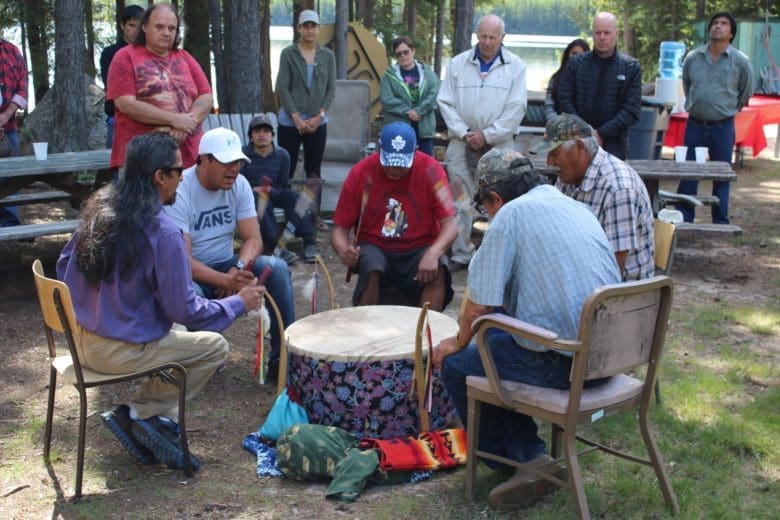Comment January 10, 2019
Indigenous and Western Approaches to Environmental Science: What integration means to us
By Dilber Yunus, Outreach Officer
In Canada, Western and Indigenous approaches to science are often considered incompatible. We explore how they can and should be working in tandem to further our understanding and protection of fresh water and the environment.
Two ways of knowing
Western approaches to environmental science focus on finding solutions to tackle existing environmental issues through practical data gathering and analysis. These solution-oriented approaches evolve as current technologies or modern equipment evolve for higher efficiency, better pattern recognition and predictability. Sometimes western approaches are viewed as invasive or even hasty; however as far as we can go, sophisticated research studies can deliver evidence-based findings that help form or enhance environmental laws and policies that shape today’s world. But just how fast can we chase after the world’s changing climate and emerging environmental issues?
Indigenous approaches, also known as Traditional Ecological Knowledge or simply Traditional Knowledge, are representations of experience and skills gained over thousands of years co-existing organically in a complex ecosystem. Although these approaches are frequently associated with ontological and spiritual concepts, they are gradually but surely being recognized as proof of practical sustainability, and the finest expression of human survival and adaptation. With one foot outside the world of science, Indigenous approaches remind us of our basic role as part of nature, and of our basic human instinct to strike for survival as opposed to taking it for granted. Now the question is: just how far can we go relying solely on western approaches to solve all the modern-day environmental problems?

IISD-ELA is working to build meaningful relationships with our Indigenous neighbours in Treaty #3 land, in areas of freshwater science, climate change and environmental policies.
This ancient African proverb may provide some insight: if you want to go fast, go alone; if you want to go far, go together.
In the spirit of collaboration, IISD Experimental Lakes Area (IISD-ELA) is working to build meaningful relationships with our Indigenous neighbours in Treaty #3 land, in areas of freshwater science, climate change and environmental policies. To that end, we have hosted four annual Fall Feasts since 2015 to bring Indigenous perspectives to our work. A community-based monitoring (CBM) training program was developed in collaboration with the Grand Council of Treaty #3 as a result of one of these feasts.
Remember that video we made (below) explaining why we need to reduce how much mercury ends up in our fresh water? We are currently translating it into Ojibwe, so that the communities can best benefit from research findings. This winter, our team participated in a two-day training session on Ojibwe history, language and culture, and are looking forward to doing more in the future.
What have we learned?
Open dialogues and discussions have helped us understand communities’ needs. For example, the CBM training program aims to build community capacity to sample and monitor mercury in local water bodies—an issue of particular relevance and concern to some First Nations communities.
One major concern, however, is an increasing number of Indigenous youth disconnecting with the culture, which is factually evident when most Indigenous languages operate within a system that favours official and other popular international languages. In fact, Statistics Canada reported a 2 per cent decline between 2006 and 2011 in overall conversational speakers of Indigenous languages. Events like the Fall Feasts have helped us learn more about these concerns.
Fall Feast 2018, themed “Integration of Indigenous and Western Knowledge Systems,” took place on October 1, 2018 and welcomed over 20 members from eight communities—Elders and youth alike. It proved to be a lively debate that raised many vital questions about the importance of integrating the two models, but also potential limitations. Participants shared their understandings of both Indigenous/traditional and western approaches to knowledge.
This ancient African proverb may provide some insight: if you want to go fast, go alone; if you want to go far, go together.
It became clear that integrating the two models will not be free of challenges. One Elder emphasized that “traditional knowledge shouldn’t be taken away from the people,” and then underlined the importance of “protecting intellectual properties.” We have learned that where “there’s taking, there’s offering.” The discussion on the acts of taking from the environment (land, water, animals, vegetation, etc.) and offering (to the environment) evolved into “respecting the elements and the living of all things,” and “taking responsibility for the survival of future generations.”

Open dialogues and discussions have helped us understand First Nations communities’ needs.
Educators among the group were particularly interested in the collaborative educational programming to bring the two ways of knowing together, and shared their thoughts on “reducing obstacles” and “finding a way to make it more accessible for traditional knowledge teachers and knowledge holders to pass on their teachings.”
Regarding Canada’s educational systems, one Elder noted that “we need to let the government know that traditional knowledge should be included in syllabi, and should educate non-native populations, including those in government, about traditional knowledge and its relevance.”
Where do we go from here?
Moving forward, we see a unique opportunity for IISD-ELA working closely with Indigenous knowledge holders to look at how the two ways of knowing work together and benefit each other. This process needs to keep in mind that knowledge sharing is an exercise of two-way information exchange; thus, we need to create space for Indigenous participation both in depth and in length. Inclusion of Indigenous knowledge in our educational programming will play a significant role in inspiring young Canadians to look at nature from both viewpoints. Indigenous practices and perspectives will be particularly valuable in the process of environmental policy formation or improvement. Furthermore, preservation and restoration of Indigenous language and culture is critical to forge ahead reconciliation and to enrich Canadian culture as a whole.
What role can IISD-ELA play to achieve these goals?
We plan to organize regular training sessions for our team on Indigenous worldviews and Traditional Ecological Knowledge. We will continue communication with Elders and knowledge holders and expand our reach to more communities in Treaty #3. We will carry on with existing collaborative projects, for example on translating infographic videos and key research findings, and actively search for more partnership opportunities. We will also keep in mind that integration of the knowledge systems is an ongoing process; therefore, long-term and continuous Indigenous participation will help build trust, meaningful relationships and a shared goal of protecting the land and water.